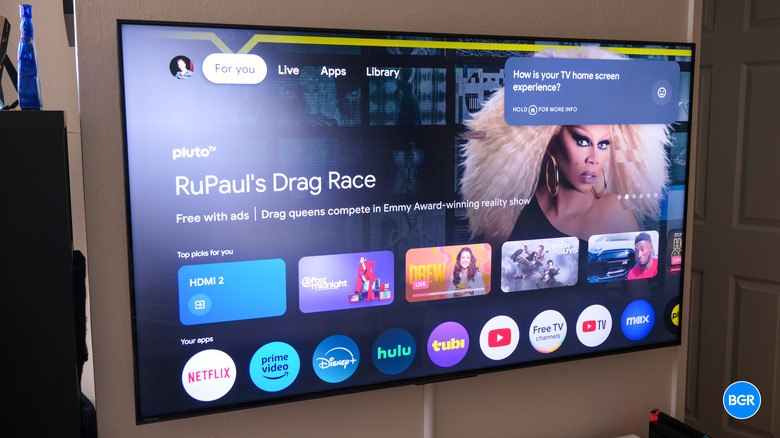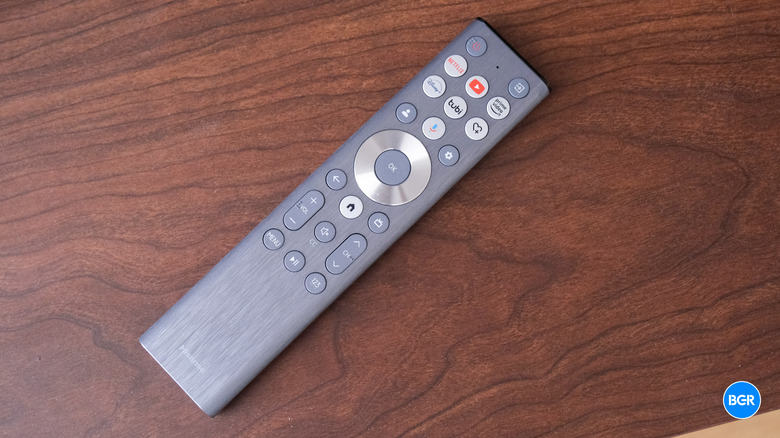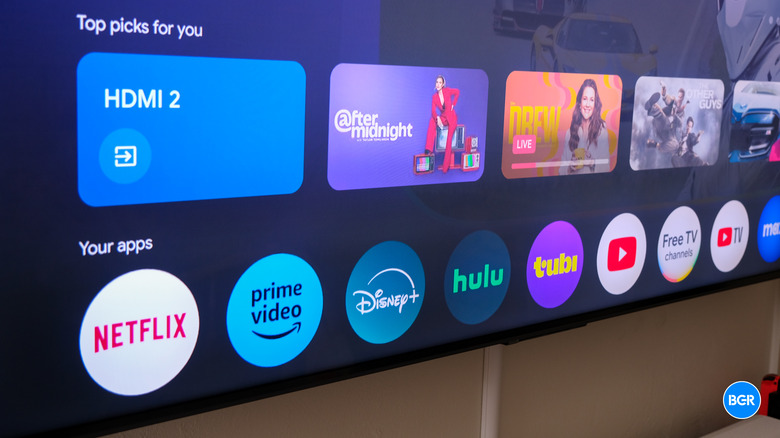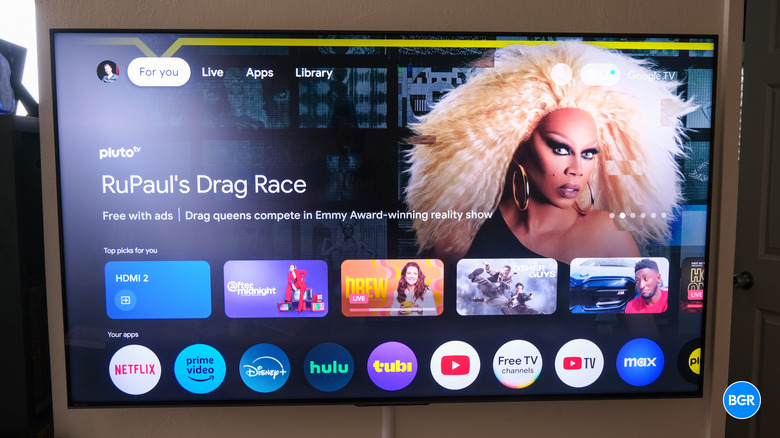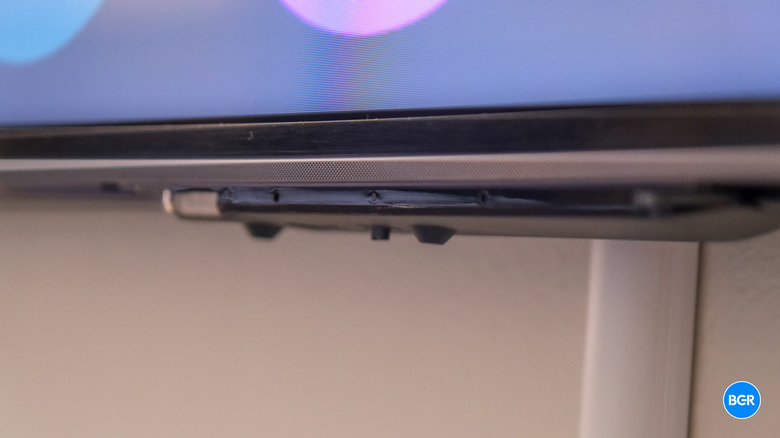Hisense U8N Review: The Best-Value TV Right Now
- Huge brightness
- Google TV works well
- Excellent value
- Deep blacks with Mini-LED
- Redesigned remote is nice
- Only two HDMI 2.1 ports
| Buy From | List Price | Sale Price | |
|---|---|---|---|
| Amazon | $1,499.99 | $1,099.99 | See It |
We may receive a commission on purchases made from links.
Hisense is continuing to push the boundaries of what a budget or midrange TV can offer. For a few years now, its U8 series has offered stunning image quality at a reasonable price, closing the gap between the midrange and the highest-end TVs in the business. The latest model, the U8N, continues this mission. Like the previous generation, it has Mini-LED backlighting but adds a higher brightness and tweaks the design.
These improvements may seem minor, but a higher brightness makes a big difference — and even minor upgrades to an absolutely incredible TV are still welcome. The Hisense U8K was the best TV in its price range — and the Hisense U8N takes the baton from here. But it also happens to be better than many TVs much more expensive. Here's what makes the Hisense U8N such an impressive TV.
Hisense U8N specs
| Display size | 55, 65, 75, 85, 100 inches |
| Resolution | 3840 x 2160 |
| Display type | Mini-LED ULED |
| Refresh rate | 144Hz |
| Ports | 2 x HDMI 2.1, 2 x HDMI 2.0, USB 2.0, optical, ethernet, aux |
| HDR support | HLG, HDR10+, Dolby Vision |
| Software | Google TV |
| Price | $1,099.99 – $4,999.99 |
Hisense U8N design
The Hisense U8N doesn't reinvent the wheel when it comes to design, but it still looks nice. It's not as impressive-looking as, say, the Samsung S95D—it's thicker and doesn't offer unique design touches like Samsung's much-loved OneConnect Box—but it's far from an ugly TV.
Unlike the U8K, the U8N has a pedestal stand attached to the center bottom of the TV. It looks fine; however, I wall-mounted the TV in my living room and found that it looked great like this. The TV is thicker than many of the more expensive options out there right now, coming in at 3 inches thick at its thickest. So, it won't mount flush like other options out there—but then again, we wouldn't expect it to.
Generally, the TV looks modern, though. The bezels around the screen are slim, and while the bottom bezel is a little thicker, it also houses more tech — like the microphones for voice controls. Most will find the TV to look premium and solid.
Hisense U8N ports
On the right side of the TV can be found the port selection, and it's not bad. The TV has four HDMI ports — however unfortunately only two of them are HDMI 2.1 ports for variable-refresh-rate technology. The other two ports are HDMI 2.0 ports. Thankfully, the HDMI eARC port is one of the HDMI 2.0 ports — so you won't use up one of your HDMI 2.1 ports by connecting a soundbar to the TV.
On top of the HDMI ports, the TV offers everything you would expect. There's an optical port, USB port, ethernet port, and headphone jack. It's a good selection of ports, though again, I wish all four HDMI ports were HDMI 2.1-compatible, like many of the more expensive TVs.
Hisense U8N remote
The Hisense U8N gets a new remote compared to previous-generation models, and it's a nice upgrade. Gone is the black plastic bar, in favor of a brushed metal look. It is still built from plastic, but it certainly looks nicer.
The remote has all the software controls you would expect, along with an impressive six quick-access buttons. These are for Netflix, YouTube, Prime Video, Disney+, and Tubi. The final button is programmable, which is nice.
Hisense U8N software and features
The Hisense U8N is powered by Google TV, as expected. Thankfully, the days of Google TV being super-slow — and of TVs offering underpowered chips — are mostly over. While the operating system isn't as zippy as your phone, it's relatively reactive. It'll still take a split second to jump between apps or get home, but the lag certainly wasn't as bad as on TVs of only a few years ago.
Google TV itself is pretty well-designed. The top of the interface offers quick-access content, followed by a row of apps. Under that can be found rows of content for each app. It's easy to navigate, and if you haven't used it before, you'll get used to it pretty quickly.
The Hisense U8N supports features outside of the Google ecosystem too though. You'll get Apple HomeKit and AirPlay, so it'll fit nicely in Apple's ecosystem, for example.
Hisense U8N performance
The Hisense U8N is an LED TV with Mini-LED backlighting, helping make for deep black levels and higher contrast. It makes use of a quantum dot layer for more vibrant colors and a higher brightness — and delivers a brightness of over 3,000 nits. Unlike some high-end TVs (ahem, Samsung S95D), it supports Dolby Vision and HDR10+.
The performance of the TV is stellar. The Mini-LED backlighting essentially means that the TV offers thousands of tiny dimming zones, which it uses to better control black levels without too much blooming. It does so quite successfully — while you can't get a TV that is completely free of blooming without an OLED or Micro-LED screen, I didn't notice it at all except while running specific tests. I did find that the TV did lose some detail in the darkest areas of certain images, but this was less noticeable than some other TVs, and can be adjusted for a little with the built-in settings.
The brightness on offer here is particularly and impressively noticeable. While watching Dolby Vision-compatible content like Netflix's Our Planet, colors were vibrant and bright, and highlights were stunningly lifelike. The upscaling tech worked well, too, allowing for non-4K content to look almost 4K-like, though there is some better AI-powered upscaling tech out there.
I did find some issues around how the TV handles motion processing. Motion blur on fast-paced scenes was somewhat noticeable, however, less so than on other TVs. I suspect most viewers won't have much of an image with the TV's motion handling, and playing with some of the settings can help.
Generally, the performance of the TV is the exact reason why the Hisense U8 series is so loved. Images look stunning, with deep black levels and bright highlights. Colors are vibrant, and upscaling works well.
Hisense U8N audio
As with any great TV, you'll want to pair the good image quality with a solid speaker system — but thankfully the speakers on the Hisense U8N aren't terrible. They get pretty loud, and the frequency response is fine in a pinch.
The bass response on the TV is fine. The bass extension on the TV is a little lackluster, so don't expect that deep rumble that you'll get from a subwoofer. However, the bass that is there isn't badly tuned. The speakers are a little mid-heavy overall, especially in the high-mids, and that can contribute to them feeling a little cheap. The highs, as a result, get a little buried, and there's less high-end extension than there is bass, so the audio isn't as crisp as you might like. Again, it's better than TV speakers in previous years, though.
All this to say, the speakers are fine — but even a budget soundbar will sound better, and you should build better speakers into your budget when considering a TV.
Conclusions
The Hisense U8N is a natural continuation of the Hisense U8 series — which is a good thing. For a few years now, Hisense has offered the best TV in this price range, and the Hisense U8N is indeed the best TV you can get under $1,500 in 2024. That's thanks largely to the move to Mini-LED backlighting and improved brightness.
The competition
The TCL QM8 is perhaps the biggest competition to the Hisense U8N, at least at 65 inches and above. We're reviewing the TCL QM8 in the near future, but based on other reviews, it seems that Hisense still has the edge. That said, it's worth considering a last-generation OLED TV in this price range. If you can find an LG C3 for a similar price as the Hisense U8N, it may be worth getting instead, though don't expect the same brightness. However, you can't go wrong with the Hisense U8N.
Should I buy the Hisense U8N?
Yes. It's an excellent TV and the best new TV in its price range.
